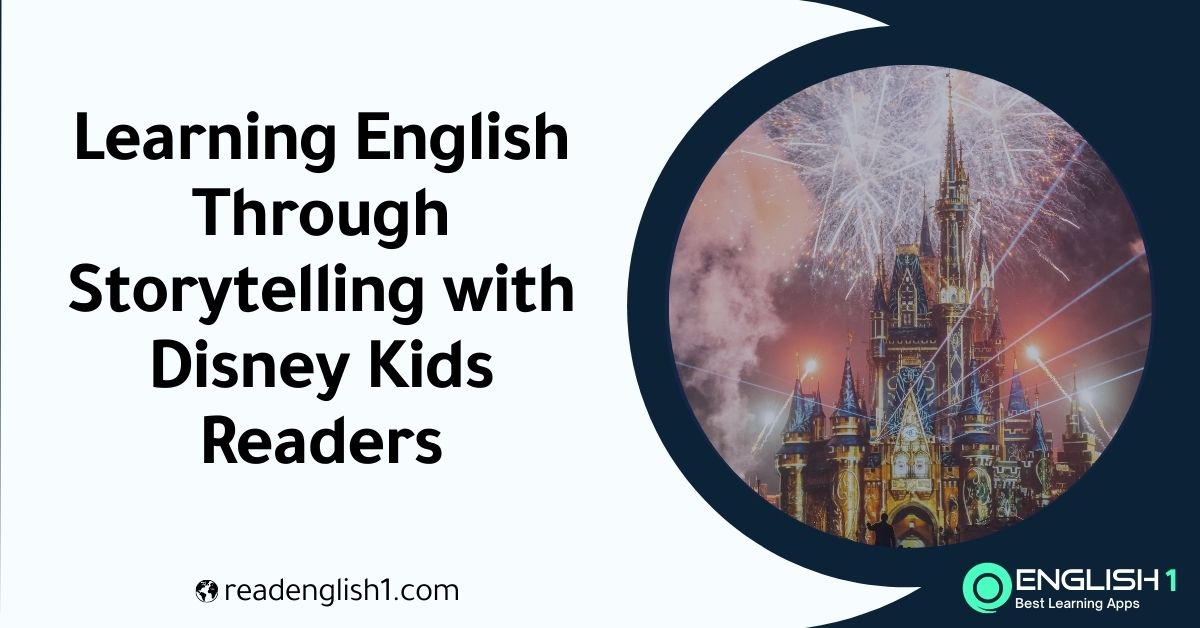Disney Kids Readers are an important part of a child’s education and learning process. The book stories help the kids to build their vocabulary, develop a reading habit, and above all, improve their understanding of English.
You’ve probably heard the term “learning through storytelling” before. While this may sound familiar, many people still don’t know what it means in terms of English learning. In this article, we discuss how you can use Disney Kids Readers to learn English through stories and be immersed in a brand new world full of adventures and characters.
Disney is the world’s most successful media and entertainment company. The Walt Disney Company has built an empire on stories that are brought to life through the characters they feature in their movies, TV shows, and theme parks. Now, Disney Kids Readers make it easier for children to learn English with engaging stories that take place in real-world locations.
Learning English through reading stories is a great way to increase vocabulary, improve reading comprehension, and sharpen listening skills. However, not all children enjoy reading the same types of books. That’s why we’ve developed Disney Kids Readers. These bilingual books are designed to help children understand the language while they are having fun and exploring.
1. Choose the right level for the class
As every teacher knows, there’s always a range of English abilities in any class. It’s important to target the comprehension level of the weaker students in the group. This ensures that you grab—and keep—everyone’s attention as you read. The stronger students will enjoy following the story with ease, while students who need a bit more support will feel a sense of accomplishment at understanding a story in English.
If you’re not sure how to choose the right book, use the leveling chart on the back cover of our Disney Kids Readers.
2. Consider the interests of your students
Some book titles may remind you of things the children have chatted about in class: their hobbies, interests, their pets, family members, or the types of books they’re reading in their first language.
Let’s take an example. You’re teaching a group of 7- to 8-year-olds at A1 level. Several of the students have a pet and so you decide to read the Disney Kids Level 3 Reader 101 Dalmatians with the class. You preface the storytelling by asking about pets:
- Who has a pet? Raise your hand.
- Who has a pet dog?
- Nilsa, what’s the name of your dog?
- Let’s read a story about dogs.
By doing this, you’re tapping into your students’ interests. It also helps them anticipate what the story will be about, which is an important pre-reading skill.
3. Learn the story beforehand
Once you’ve selected the book, read it through to familiarize yourself with the characters, plotline, and settings. Then read it aloud several times to practice your pacing and delivery. The better your delivery, the more your class will enjoy listening and reading along with the story.
As part of your preparation, listen to the Disney Kids Reader enhanced Audiobook to hear the pronunciation of names and places in the story. It always helps to hear how the professionals have chosen to read the story, which words they stress, where they pause, etc.
In fact, you may prefer to use the Audiobook for story time rather than read it yourself. The music and the dramatic sound effects will certainly help to establish meaning and context.
4. Predict which words will be new to the class
Inevitably, there will be words and phrases in the story that are unfamiliar to your students. Since we’re aiming for maximum comprehension, decide ahead of time which keywords (words that carry meaning: nouns, adjectives, verbs, adverbs) to pre-teach before you read the story.
To make this task easier for teachers, we’ve selected key story words that learners might struggle with. These are listed in the back of each Disney Kids Reader in the form of a Picture Dictionary in levels 1–3; in levels 4–6, you’ll find a Glossary. We’ve also included a set of handy, photocopiable flashcards.
- Show each flashcard in turn. Say the word and get students to repeat it. Stick the cards on the board as you introduce them.
- Split the class into two teams and give each team a fly swatter.
- Say a sentence that includes one of the keywords, e.g., Sometimes my dog barks loudly.
- One person from each team races to the board, swats the correct card, and says the word: barks.
- The fly swatter is passed to the next person on the team and the game continues until all the cards have been swatted.
5. Establish a story time routine
After all the excitement of games and activities, it’s time to settle the class down for story time. Clear away books, stationery and any other distractions. If possible, have everyone sit around you either on a rug or on chairs. When everyone is quiet and settled, you can begin the storytelling.
6. Build curiosity and context
Show the front cover, read the title and ask questions to spark curiosity and to predict aspects of the story, e.g.
- How many puppies can you see?
- What’s a Dalmatian?
- What kind of story do you think this is?
Then turn to the In This Book page at the front of the reader and introduce the characters. Say the name while students repeat, and then read the description for each character.
With the book facing the group, read the story aloud, using your voice and facial expressions for effect. Alternatively, play the Audiobook. Pause to ask questions and to point things out in the picture.
Learning English
Story time is a pleasurable, stress-free activity for learners. It’s the first step in building a love of reading. Yet, you can be assured that a lot of language learning is taking place as you read together: vocabulary building; making the connection between the printed words, spelling patterns, and pronunciation; seeing language structures in context, and using critical thinking skills. Even better: there’s a wealth of research showing that reading not only improves reading skills but listening, speaking and writing skills as well.
Now that you’ve captured your students’ interest in the story, there are endless ways of using it as a springboard for learning. I’ll be discussing some of these ideas in upcoming blog posts.
And in case you’re still wondering what Coco’s father did after he said goodbye, might I suggest that you read the book? (Disney Kids Readers Level 3: Coco) It’s a great read!

